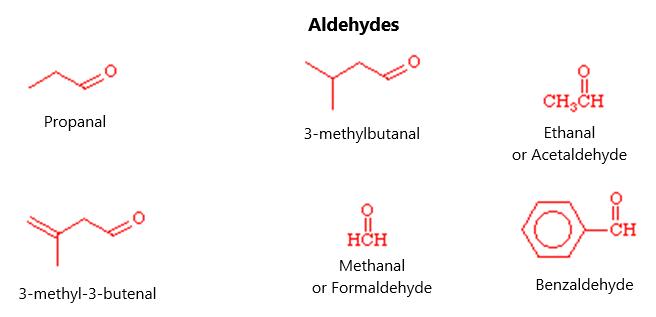NAMING ALDEHYDES Aldehydes have an RCOH configuration with the carbonyl group being an important functional group. Other names for the carbonyl group in an aldehyde are the methanoyl or formyl group. The name “aldehyde” stems from the dehydration of alcohols. The main difference between an aldehyde and a ketone is that there is a hydrogen ion attached to the carbonyl carbon in an aldehyde and an R chain attached in a ketone. Technically, the hydrogen atom can be attached on both sides of the carbonyl carbon atom in “methanal” or formaldehyde. Figure 40 shows the characteristic structure of these important molecules:
Figure 40.
The ending “al” is the designation given to aldehydes. The carbon chain is numbered from the carbonyl atom and the numbering proceeds to identify the longest chain possible that contains the carbonyl group. There are many common names for aldehydes, which will be discussed. Rather than name the carbon atoms by number in smaller aldehydes, they are referred to by Greek letters. This means that the carbon atom next to the carbonyl atom is called alpha, followed by beta, gamma, delta, and so on. If the CHO functional group is attached to a ring, the ring carbon is called “number one” and the aldehyde is referred to as a “carbaldehyde”. Otherwise, for chain aldehydes, it would be wise to remember the alkane side names as these are used in describing aldehydes.
77




























































